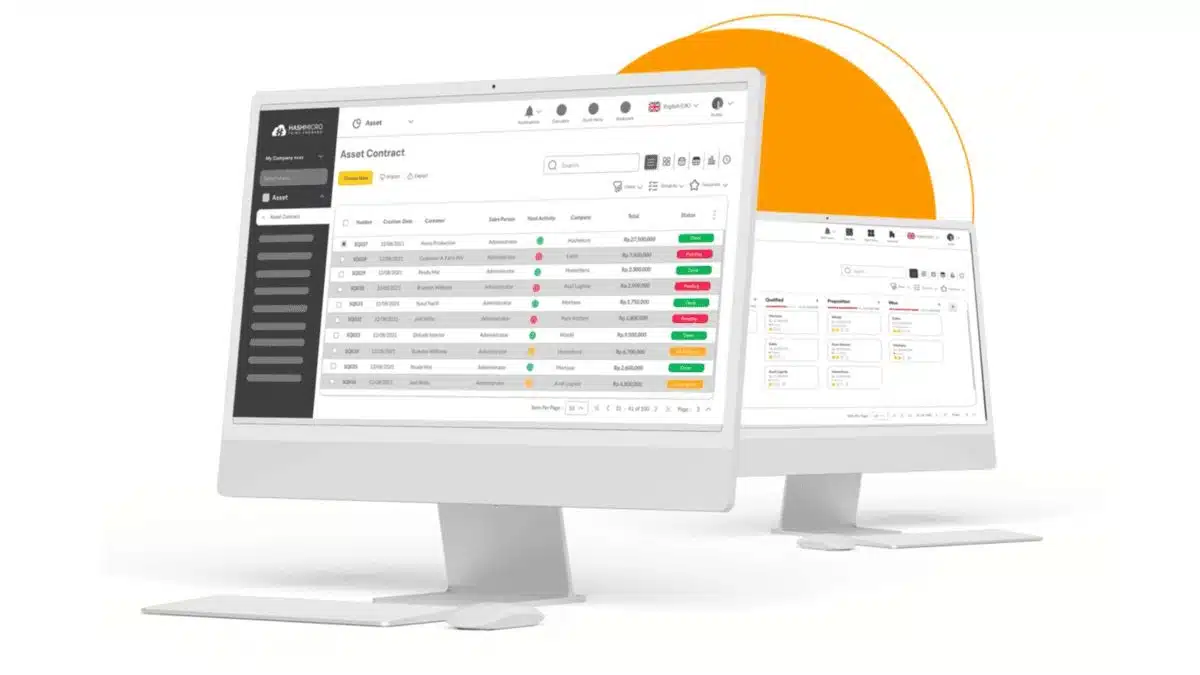A masiglang negosyo in the Philippines manages hundreds of assets—laptops, machinery, office furniture, and more. Some of these items are broken, lost, or no longer in use, yet they still clutter the official asset lists. These “ghost assets” inflate costs and mess up financial records, creating obstacles in a company’s growth and profitability.
Ghost assets sneak in when companies overlook disposed, misplaced, or non-functional assets in their inventory. This oversight leads to unnecessary expenses and hampers financial and operational efficiency.
If your business faces these challenges, it’s time to tackle ghost assets head-on and restore order to your asset management. Read on to learn how to identify and eliminate it effectively!
Key Takeaways
|
Table of Contents

What are Ghost Assets?
Ghost assets are items listed on a company’s asset register but are lost, stolen, destroyed, or unusable. Essentially, they’re assets the business believes it owns, but they no longer exist or function. Common causes include poor record-keeping, missed audits, or delays in updating asset records.
Identifying ghost assets is vital for accurate financial management. These phantom items distort financial data, leading to incorrect valuations and reports. Removing them ensures the company’s books reflect its true asset base, aiding in better financial decisions and resource allocation.
Negative Impacts of Ghost Assets on Businesses
1. Paying taxes on non-existent assets
Incorrect asset records often result in businesses overpaying taxes. When ghost assets remain on the books, the company’s asset value appears higher than it actually is. As a result, businesses end up paying more in property or asset taxes for items they no longer possess or use, leading to an unnecessary financial burden.
This situation becomes especially troublesome during tax season, where every peso counts. Business owners might miss opportunities for tax savings due to inaccurate asset valuations. Therefore, keeping an updated and accurate asset register is key to minimizing tax overpayments and improving cash flow.
2. Inflated insurance premiums
Similarly, ghost assets can inflate insurance premiums. Insurance companies often calculate premiums based on the value of a company’s total assets. If your asset register includes non-existent items, you’re likely overpaying for insurance coverage on assets that no longer exist.
By maintaining outdated records, businesses may find themselves spending more on insurance than they need to. A proper asset review ensures that you only pay for insuring items that are still functional and in use, which directly contributes to cost savings.
3. Reduced productivity and efficiency
Ghost assets have a direct impact on productivity. When asset records are inaccurate, it becomes challenging for teams to track which equipment is available or needs maintenance. This can lead to wasted time, delays in project completion, and unplanned expenses.
Additionally, ghost assets can cause confusion and inefficiency within asset management processes. Staff may spend valuable time searching for items that no longer exist, affecting overall productivity. Correcting these discrepancies is key to streamlining operations and maximizing efficiency.
How to Identify Ghost Assets
When ghost assets are left unchecked, they can lead to inflated asset values and incorrect financial reporting. A systematic review and verification of assets helps businesses maintain an accurate inventory.
- Conduct a Comprehensive Asset Review: Thoroughly examine your asset register, checking for outdated information, unused assets, or incomplete records. List suspicious items and schedule a detailed physical check to confirm their existence.
- Perform a Physical Asset Audit: Physically verify each item in your asset register to ensure it exists and is functional. This process reveals discrepancies in documentation, helping keep asset records accurate and up-to-date.
- Cross-Check Asset Documentation: Verify receipts, warranties, and maintenance records for each asset to match its status in the register. This step uncovers assets that may have been disposed of or lost without proper documentation.
Following these steps, businesses can identify ghost assets and correct their financial data. This practice not only promotes compliance with tax regulations but also supports more informed decision-making. Addressing ghost assets early ensures a clearer, more efficient asset management process.
Steps to Remove Ghost Assets
Removing ghost assets is essential for financial accuracy and effective asset life cycle management. It requires more than deleting items; it involves adjusting asset registers and financial statements. A structured process helps businesses reflect true asset value and boost operational efficiency.
- Remove Assets from Records: Update your asset register to show the current asset status using documentation like disposal reports. This step ensures compliance with accounting standards and maintains a clear audit trail.
- Adjust Financial Statements: Modify your financial statements to accurately represent the company’s true asset base and avoid overvaluation. Consulting with an accountant ensures these changes meet financial reporting standards.
- Update Asset Management Procedures: Establish policies for regular audits, proper documentation, and prompt removal of disposed assets to prevent future ghost assets. A systematic approach helps minimize errors and maintains asset integrity.
By implementing these steps, businesses can effectively eliminate ghost assets and prevent their recurrence. This proactive approach not only cleans up records but also strengthens the company’s financial health. Ultimately, it leads to better strategic planning and resource allocation.
Read More: Top Manufacturing Asset Management Software
How to Avoid Accumulating Ghost Assets
To prevent the recurrence of ghost assets, businesses should adopt strategies that keep asset records up-to-date and accurate. Implementing regular audits and utilizing technology can greatly aid in this effort.
Implement regular asset audits
Conducting periodic asset audits is essential for maintaining accurate records. Regular audits allow you to verify the existence and condition of assets, ensuring that outdated items are promptly removed from the asset register.
Scheduled quarterly or annual audits ensure discrepancies are caught early and corrected. This practice safeguards your financial health and promotes efficient asset management.
Utilize asset management software
Using assets management system can simplify tracking and managing assets effectively. This technology provides a centralized platform for recording, monitoring, and updating asset information, reducing the risk of human error and missing data.
Asset management software also automates processes such as depreciation calculations, maintenance scheduling, and documentation tracking. These features help maintain up-to-date records, minimizing the risk of ghost assets appearing in your asset register.
Benefits of Removing Ghost Assets
Eliminating ghost assets significantly benefits businesses, improving financial accuracy and operational efficiency. Addressing these hidden issues positively impacts various areas of management.
- Accurate Financial Reporting: Removing ghost assets ensures financial reports reflect the true value of company assets. Accurate records improve credibility, facilitate better strategic decisions, and aid in tax compliance, ultimately supporting business growth.
- Cost Savings: Correcting asset records leads to cost savings by reducing insurance premiums and preventing unnecessary tax payments. These savings can be reallocated to other crucial areas like business growth or enhancing operational efficiency.
- Improved Operational Efficiency: Accurate asset records streamline management processes, enabling teams to track assets effectively, schedule maintenance, and plan replacements. This improved efficiency boosts productivity and helps the business function smoothly.
By removing ghost assets, companies can achieve greater financial clarity, cost savings, and operational effectiveness, ultimately enhancing overall business performance.
Manage Ghost Asset with HashMicro’s Asset Management Software
Managing ghost assets becomes more efficient with the right tools in place. HashMicro’s Asset Management Software offers a comprehensive solution to identify, track, and manage assets, reducing the risks of having ghosts in your business operations.
Here’s how its features can streamline asset management:
- Asset GPS Tracking: With GPS tracking, businesses can monitor asset locations in real time, ensuring that asset registers are always accurate. It minimizes the risk of assets going unaccounted for or becoming ghost assets.
- QR Code Scanning for Facilities Requests: The QR code scanning feature simplifies the tracking and maintenance of assets by linking physical assets with digital records. This easy scanning process ensures accurate asset updates and reduces manual errors.
- Parent & Child Asset Management: This feature allows businesses to manage assets hierarchically, grouping them for better control. By tracking assets as parent or child items, businesses can quickly identify inconsistencies in asset records.
- Fully Integrated with Accounting for Depreciation Tracking: Integration with accounting systems ensures that asset depreciation is tracked accurately over time. This prevents ghost assets from inflating the company’s asset value on financial statements.
- Comprehensive Cost Reporting: The software provides detailed asset cost reports, allowing businesses to track expenses and identify unnecessary costs. This helps maintain a clear financial picture.
Using HashMicro’s Asset Performance Management Software helps businesses stay on top of their assets accurately and easily. When choosing the best asset management software, consider features like HashMicro’s that prevent ghost assets, optimize asset usage, and maintain precise financial records.
Conclusion
In summary, ghost assets pose significant challenges to business operations by inflating costs, complicating financial reports, and reducing productivity. Identifying and removing these phantom assets is crucial to restoring financial accuracy and improving overall efficiency.
To prevent future accumulation of ghost assets, it is essential to implement regular audits and utilize tools like asset management software. HashMicro’s Asset Management Software provides a comprehensive solution, offering features like automated tracking, cost reporting, and integration with accounting systems.
By adopting this tool, companies can ensure up-to-date asset records, streamline operations, and support better financial decision-making. Ready to take control of your assets? Try our free demo and see how HashMicro can transform your asset management today!
Frequently Asked Question
-
What is a phantom asset?
A phantom asset is an item listed in a company’s records but no longer exists physically, like broken or lost equipment. They distort financial data, causing inaccuracies in asset management.
-
What are invisible assets examples?
Invisible assets are intangible resources like brand reputation, patents, and intellectual property. Though not physical, they hold value and contribute to a company’s market worth.
-
What are zombie assets?
Zombie assets are non-performing assets that drain resources without generating any value, like obsolete machinery. They reduce operational efficiency and skew a business’s financial health.














































